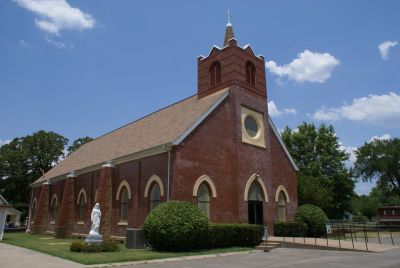La religione era una componente importante della società italiana del ventesimo secolo e molti degli eventi più significativi nella vita di un individuo erano registrati negli archivi della Chiesa cattolica. I registri ‘sacramentali’ possono, di conseguenza, contenere preziose informazioni genealogiche, utili anche per risalire o aggiungere dettagli alla cronologia familiare, precisando nomi, date, luoghi di nascita, matrimoni e decessi. I Registri ecclesiastici sono cruciali per la effettuare ricerche genealogiche su fatti antecendenti all’introduzione del Registro di stato civile, tenuto dagli enti locali statali e concernente informazioni sullo stato civile di ogni cittadino italiano.
Religion was an important aspect of many of our Italian ancestors’ lives and when they settled in America, they brought their faith with them. Many of the important events that happened in their lives and their families’ lives were recorded in church records. If your ancestors were Catholic, as a majority of Italian immigrants were, “sacramental” records may contain valuable genealogical information. The main types of sacramental records are baptism, communion, confirmation, marriage, and burial. Each of these has a distinct advantage in discovering or adding details to your family history. This month we are going to explore church records and how to find them.
There are several reasons why you would want to consider church records. First, if you are trying to determine a birth, death or marriage date for an event that was not registered in state or local vital records (many states did not require registration of events until well into the 1900s), this information may be found in church records. Sometimes, even if there was state-wide registration of vital events, a civil record may not exist because the immigrant parents were unaware of the requirement to record the event or unable to do so because they did not speak or understand English. Second, if you are trying to determine the maiden name of a female ancestor, a church record may have recorded a maiden name. Third, you may discover children in the family who did not survive to adulthood. A baptismal certificate may be the only record in existence of a child who died young. Fourth, church records can help you trace when your ancestors lived in a particular place so that you can create a timeline of your family’s migration. Finally, by looking at church records, you may see who the important people were in your ancestors’ lives. Baptismal records may show the names of godparents; confirmation records may show a sponsor. Being a godparent or sponsor was considered a high honor in Catholic families, so the people asked to do this honor were those who were well respected and important to your ancestors. Sometimes they were relatives or family friends. You may have heard an ancestor call someone “cumare” or “cumpare” which in some southern dialects means “godmother” and “godfather.” Knowing who these people were can help you solve some mysteries such as the name of an ancestral village. For example, was the godparent a relative or was he or she a friend from the “old country” who came from the same village as your ancestor?
Generally, Catholic records are not available online and are kept by the local parish church that created the record. Keep in mind if a parish was closed, its records may have been transferred to the Diocese or Archdioceses. Fortunately, today many parishes and dioceses have websites where you can find out how to request a record. To find a local Catholic parish, you can use the website www.parishesonline.com. The request boxes ask for a church name and a location. If you don’t know the name of the church, just use “church” in the church name box. If you need to find a diocese or archdiocese for a closed church, go to this website www.usccb.org/about/bishops-and-dioceses/diocesan-locator.cfm. If you have no luck at those websites, try using www.google.com to search for churches in the area where your ancestor once lived.
There is some good news in this area of research. In 2017 www.findmypast.com began digitizing and indexing Catholic church records for Philadelphia, Chicago, Baltimore, and the New York City area and will be adding more U.S. locations over the next several years.
What if you find that there was not a Catholic church in the area where your ancestors once lived? It was not unusual for early Italian immigrants to settle in areas where there was not a Catholic church. If you find this to be the case for your family, check with other denomination churches in the area for records. Faithful immigrants were known to adopt another Christian faith when there was not a Catholic church nearby to serve their religious needs. Some of these church records may be found online at www.ancestry.com or www.familysearch.org.
Although rarer than the other types of records mentioned above, some parishes created parish census records or family registers. If you can find these, they can be a gold mine of genealogical information and are much like a civil census record. These records will list at a minimum the names of the individuals in each family unit and sometimes more details like age which will help you narrow down a date to search for another record such as a baptismal record, marriage or burial record.



